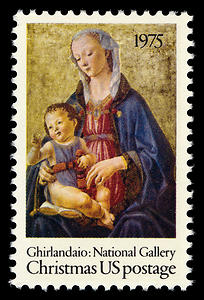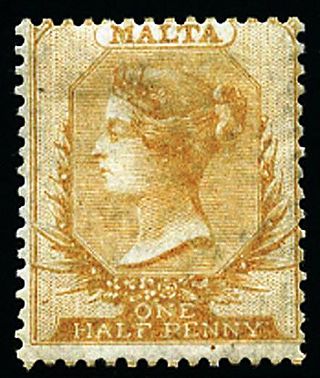Related Research Articles

A postage stamp is a small piece of paper issued by a post office, postal administration, or other authorized vendors to customers who pay postage. Then the stamp is affixed to the face or address-side of any item of mail—an envelope or other postal cover —which they wish to send. The item is then processed by the postal system, where a postmark or cancellation mark—in modern usage indicating date and point of origin of mailing—is applied to the stamp and its left and right sides to prevent its reuse. Next the item is delivered to its addressee.

The postal and philatelic history of Canada concerns postage of the territories which have formed Canada. Before Canadian confederation, the colonies of British Columbia and Vancouver Island, Prince Edward Island, Nova Scotia, New Brunswick and Newfoundland issued stamps in their own names. The postal history falls into four major periods: French control (1604–1763), British control (1763–1841), colonial government control (1841–1867), and Canada, since 1867.

Postal service in the United States began with the delivery of stampless letters whose cost was borne by the receiving person, later encompassed pre-paid letters carried by private mail carriers and provisional post offices, and culminated in a system of universal prepayment that required all letters to bear nationally issued adhesive postage stamps.

A definitive stamp is a postage stamp that is part of the regular issue of a country's stamps, available for sale by the post office for an extended period of time and designed to serve the everyday postal needs of the country. The term is used in contrast to a "provisional stamp", one that is issued for a temporary period until regular stamps are available, or a "commemorative stamp", a stamp "issued to honor a person or mark a special event" available only for a limited time. Commonly, a definitive issue or series includes stamps in a range of denominations sufficient to cover current postal rates. An "issue" generally means a set that is put on sale all at the same time, while a "series" is spread out over several years, but the terms are not precise. Additional stamps in a series may be produced as needed by changes in postal rates; nevertheless some values may be permanently available, regardless of prevailing rates; examples include 1c or 1p and $1 or £1.

This is an introduction to the postal and philatelic history of Italy.

This is an overview of the postage stamps and postal history of Australia. encompassing some history of the Australian colonies and the main stamp issues that followed the takeover of the colonies as well as later issues and also an precis of the external territories.
This is a survey of the postage stamps and postal history of the German territory of the Saar. As a border region contested between France and Germany, the Saar has a somewhat complicated philatelic history.

In philately, the denomination is the "inscribed value of a stamp".

The demonetization of postage and revenue stamps is the process by which the stamps are rendered no longer valid. In general, stamp demonetization is a rare event, since any unused stamp is effectively equivalent to its face value, and there is no financial disadvantage if postal customers use old stamps on their mail. Demonetization chiefly occurs in connection with major upheavals in the postal system, such as a transfer from one country to another, or currency changes, such as decimalisation, or a change of government. The process of exchanging millions or billions of stamps in the public's hands, plus that of exchanging post office stock, is usually complicated and difficult, and offers much interest for students of postal history.
A semi-postal stamp or semipostal stamp, also known as a charity stamp, is a postage stamp issued to raise money for a particular purpose and sold at a premium over the postal value. Typically the stamp shows two denominations separated by a plus sign, but in many cases the only denomination shown is for the postage rate, and the postal customer simply pays the higher price when purchasing the stamps.

The United Nations Postal Administration (UNPA) is the postal agency of the United Nations. It issues postage stamps and postal stationery, denominated in United States dollars for the office in New York, in Swiss francs for the office in Geneva and in euros for the office in Vienna. As such, UNPA is the only postal authority that issues stamps in three different currencies.

The postage stamps of Ireland are issued by the postal operator of the independent Irish state. Ireland was part of the United Kingdom of Great Britain and Ireland when the world's first postage stamps were issued in 1840. These stamps, and all subsequent British issues, were used throughout Ireland until the new Irish Government assumed power in 1922. Beginning on 17 February 1922, existing British stamps were overprinted with Irish text to provide some definitives until separate Irish issues became available within the new Irish Free State. Following the overprints, a regular series of definitive stamps was produced by the new Department of Posts and Telegraphs, using domestic designs. These definitives were issued on 6 December 1922, the day that the Irish Free State officially came into existence; the first was a 2d stamp, depicting a map of Ireland. Since then new images, and additional values as needed, have produced nine definitive series of different designs.

Non-denominated postage is a postage stamp intended to meet a certain postage rate, but printed without the denomination, the price for that rate. They may retain full validity for the intended rate, regardless of later rate changes, or they may retain validity only for the original purchase price. In many English-speaking countries, it is called non-value indicator or non-value indicated (NVI) postage. Introduced to reduce the cost of printing large issues of low-value stamps to "top-up" old issues, NVI stamps are used in many countries.

The Columbian Issue, also known as the Columbians, is a set of 16 postage stamps issued by the United States to commemorate the World's Columbian Exposition held in Chicago during 1893. The finely-engraved stamps were the first commemorative stamps issued by the United States, depicting various events during the career of Christopher Columbus and are presently much valued by collectors.

The postal history of Malta began in the early modern period, when pre-adhesive mail was delivered to foreign destinations by privately owned ships for a fee. The earliest known letter from Malta, sent during the rule of the Order of St John, is dated 1532. The first formal postal service on the islands was established by the Order in 1708, with the post office being located at the Casa del Commun Tesoro in Valletta. The first postal markings on mail appeared later on in the 18th century.

Definitive postage stamps of Ireland are the regular series of definitive postage stamps issued by the Irish Free State between 1922 and 1937 and by Republic of Ireland since 1937. Nine distinctly different series of designs have been released; additionally the watermark was changed for two issues and the currency was changed on three occasions while the designs remained the same.

The Regular Issues of 1922–1931 were a series of 27 U.S. postage stamps issued for general everyday use by the U.S. Post Office. Unlike the definitives previously in use, which presented only a Washington or Franklin image, each of these definitive stamps depicted a different president or other subject, with Washington and Franklin each confined to a single denomination. The series not only restored the historical tradition of honoring multiple presidents on U.S. Postage but extended it. Offering the customary presidential portraits of the martyred Lincoln and Garfield, the war hero Grant, and the founding fathers Washington and Jefferson, the series also memorialized some of the more recently deceased presidents, beginning with Hayes, McKinley, Cleveland and Roosevelt. Later, the deaths of Harding, Wilson and Taft all prompted additions to the presidential roster of Regular Issue stamps, and Benjamin Harrison's demise (1901) was belatedly deemed recent enough to be acknowledged as well, even though it had already been recognized in the Series of 1902. The Regular Issues also included other notable Americans, such as Martha Washington and Nathan Hale—and, moreover, was the first definitive series since 1869 to offer iconic American pictorial images: these included the Statue of Liberty, the Capitol Building and others. The first time (1869) that images other than portraits of statesmen had been featured on U.S. postage, the general public disapproved, complaining that the scenes were no substitute for images of presidents and Franklin. However, with the release of these 1922 regular issues, the various scenes—which included the Statue of Liberty, the Lincoln Memorial and even an engraving of an American Buffalo—prompted no objections. To be sure, this series presented pictorial images only on the higher-value stamps; the more commonly used denominations, of 12 cents and lower, still offered the traditional portraits.

The U.S. Parcel Post stamps of 1912–13 were the first such stamps issued by the U.S. Post Office Department and consisted of twelve denominations to pay the postage on parcels weighing 16 ounces and more, with each denomination printed in the same color of "carmine-rose". Their border design was similar while each denomination of stamp bore its own distinctive image in the center (vignette). Unlike regular postage items, whose rates were determined by weight in ounces, Parcel Post rates were determined and measured by increments in pounds. The new stamps were soon widely used by industry, farmers and others who lived in rural areas. Partly owing to some confusion involving their usage, their exclusive use as Parcel Post stamps proved short lived, as regular postage stamps were soon allowed to be used to pay parcel postage rates.

Postage rates in Russia have changed multiple times in the period 1917 to present. They have been introduced by the Soviet and Russian Federation governmental organs and agencies and reflected in alteration of stamp denominations.
This is a survey of the postage stamps and postal history of Holstein, Schleswig-Holstein, Schleswig and incidentally Lauenberg. Separate stamps were issued for Holstein (1850), Schleswig (1864–1867), Holstein (1864–1866), Schleswig-Holstein (1865) and Schleswig (1920).
References
- 1 2 3 Stephens, Glen (29 January 2016). "Australia 2016 'emergency' set sells for more than $1,000 on eBay". Linns Stamp News . Retrieved 26 March 2016.
- ↑ "Canada Post issues 22¢ Butterfly make-up rate stamp March 31". World Stamps. Linns Stamp News. 19 March 2014. Retrieved 26 March 2016.
- ↑ "German Internet Stamp "Ergänzungsmarke"" (PDF). Meter Stamp Society. Retrieved 26 March 2016.
- ↑ "Star FP". USPS. 7 June 2002. Retrieved 26 March 2016.